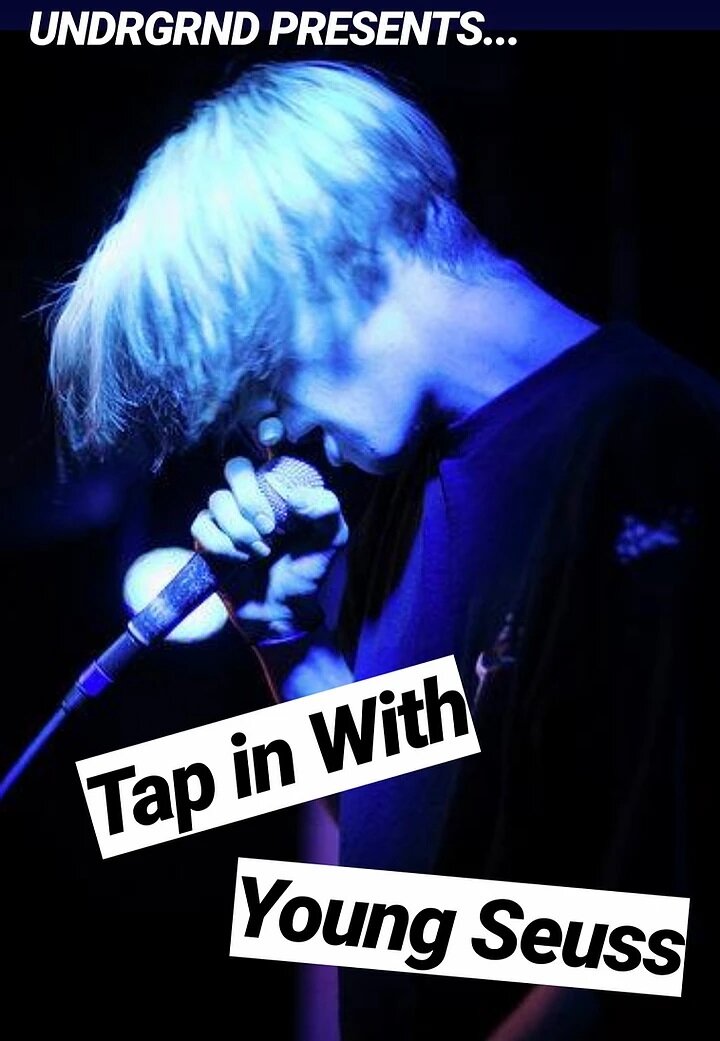Tap In With: Young Seuss
By Andrew Mason | April 2, 2020 | Undrgrnd Magazine
Young Suess. Courtesy photo.
Boston is an exciting place to next take our exploration of the underground rap universe. The state’s capital has a population of about 700,000 people, with a music scene influenced by both the city’s youthful progressiveness, and it’s charming but intense “don’t mess with me” attitude.
No one is quick to call Boston a hip-hop-hotbed, especially compared to its East Coast counterparts in New York City, Philadelphia, and Miami. Still, “Beantown” carries an undeniably genuine artistic side, and plenty of rappers to go with it.
Bradlee Madison Taylor II is a 20-year-old rapper known professionally as “Young Seuss” (@youngseuss). He possesses a rich musical background in chorus and theater, and started a punk band when he was 11 (“Guns in Public” a.k.a “G.I.P.”). Seuss can play the drums, guitar, keyboard, and more, and produce and engineer his own music.
“As my [rap] sound progressed, I was able to incorporate my history of being a punk rock kid,” Seuss says. “My roots are really punk and metal.”
Born in Charlestown, Mass., he credits nearby Roxbury—a neighborhood rich in diversity and culture—as the birthplace of his rap career. He’s made connections with a number of Boston’s local music legends, including James “JMP” Pereira, who’s directed music videos for XXXTentation, Roddy Ricch, MadeinTYO, and Comethazine.
In addition, Seuss acknowledges his friendship with fellow Roxbury rapper, Vintage Lee.
“Being in Roxbury, I was exposed to her from a very young age,” Seuss recalls of the “Hennythings Possible” artist. “We’ve always been friends like that...I modeled her first T-shirts [in 2017].”
During the mid-to-late-2010s, one of Roxbury’s particularly attractive features for an artist on the rise was the Inner Sanctum. This multipurpose warehouse is no longer active, but was often transformed into a legitimate venue that held underground rap shows.
“I didn’t really know too much about the people or anything, but I would show up,” Seuss says. “More often than not they’d end up giving me 15 or 20 minutes at the beginning of the set.”
Today, Seuss doesn’t try to hide the problems he sees in Boston’s underground hip-hop scene. He outwardly speaks on the violence that exists between people on the come up, and points out the lack of support from artists who have already made it big.
“I can’t blame them, at all,” says Seuss. “At the end of the day they have their own career to worry about.”
Seuss brings up the venues that are available for local artists. While the city boasts the impressive TD Garden (capacity of 19,580), House of Blues Boston (2,500), Paradise Rock Club (933), and Brighton Music Hall (476), Seuss feels there are not enough smaller venues with a size better catered to underground rap shows.
“There is plenty of people and plenty of money to go around...for everybody to be satisfied,” he says. “At the end of the day, our venue places out here are scarce.”
As a result, local rappers find themselves over-playing the same select venues, such as the popular Middle East nightclub located in neighboring Cambridge, Mass. The live music hall and restaurant has five different rooms and stages, ranging from the smallest capacity of 60, to the largest of 575.
Young Suess performing for a live crowd. Courtesy photo.
Seuss’ apartment studio set up.
“You know how many fucking shows I’ve played at the Middle East,” Young Seuss half-heartedly jokes. “Nine years worth of shows at that place.”
Young Seuss aims to take a break from performing live, even once the coronavirus quarantine is lifted. He cites the “pay-to-play” nature of Boston’s underground rap scene, a common reality in which an artist is only allowed stage time if he or she pays a performance fee.
While this system allows a greater number of artists to be heard, it rewards artists based on the money they can front up, instead of on pure musical talent.
“Shows kind of make you jump the gun” Seuss says. “A lot of people have trouble realizing that those people [club owners, promoters, etc.] ...are just taking your money.”
Suess already dropped five singles in 2020 alone. He is hoping to release his second album, “Seussifer” in August or September of this year, and promises a third album is already in the works. His 2018 debut album “Reflections” is available on all streaming platforms.
Seuss plans to potentially start distributing music through SoundClound directly—an option belonging only to the site’s premium members—while he currently works with DistroKid to get his music out to more listeners.
I met Young Seuss in April 2019 when he performed at the Middle East nightclub. I had never been to the venue before, which turned out to be only about a 20 minute walk from my dorm. I was there to see Pofsky (@trappofsky) and Deo Cane (@deoislame), who were in the middle of the former’s “RHYTHM.I.C.” tour, which included stops in Boston and New York City.
Seuss’ set only lasted probably 10 minutes, but he was able to fit in an impressively large range of sounds, everything from screamo rap to softer and melodic songs. His youth was evident that from both his boyish image and the charisma he carried on stage.
Boston rap is still relatively foreign to me, but the new wave of hip-hop is unconquered and raw. Seuss is an eccentric talent with a kind heart and an obvious drive to be successful. And in a blue-collar town like Boston, sometimes that’s all it takes.
Listen to Young Seuss:



